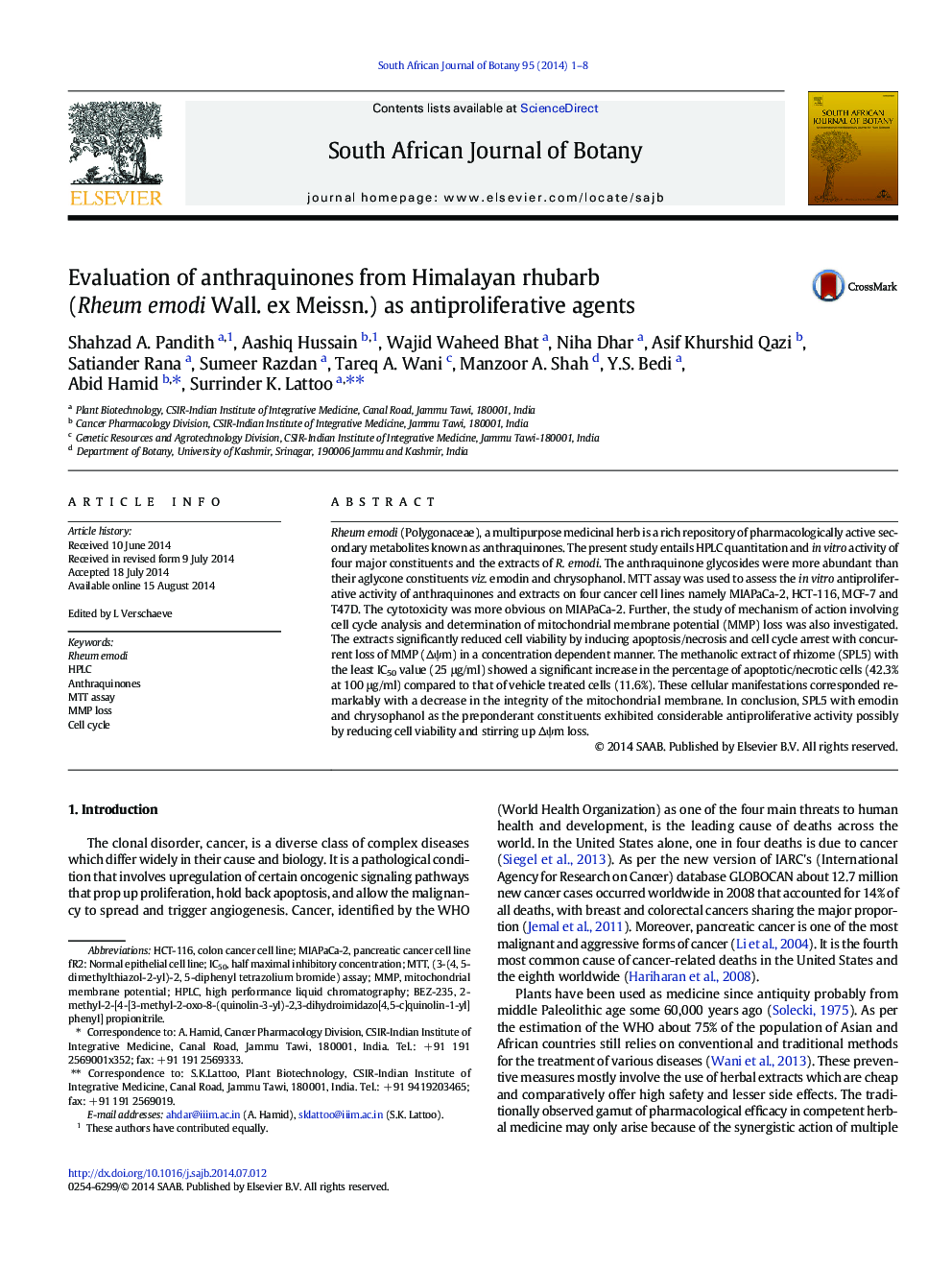| کد مقاله | کد نشریه | سال انتشار | مقاله انگلیسی | نسخه تمام متن |
|---|---|---|---|---|
| 4520630 | 1625163 | 2014 | 8 صفحه PDF | دانلود رایگان |

• HPLC quantification of R. emodi anthraquinones from four Himalayan locations.
• Anthraquinone glycosides were abundant across the geographical domains.
• R. emodi extracts were efficacious against MIAPaCa-2 pancreatic cancer cell line.
• Methanolic extract of rhizome showed considerable antiproliferative activity.
• Rhizome extracts stirred up ∆ψm loss and had a significant effect on cell viability.
Rheum emodi (Polygonaceae), a multipurpose medicinal herb is a rich repository of pharmacologically active secondary metabolites known as anthraquinones. The present study entails HPLC quantitation and in vitro activity of four major constituents and the extracts of R. emodi. The anthraquinone glycosides were more abundant than their aglycone constituents viz. emodin and chrysophanol. MTT assay was used to assess the in vitro antiproliferative activity of anthraquinones and extracts on four cancer cell lines namely MIAPaCa-2, HCT-116, MCF-7 and T47D. The cytotoxicity was more obvious on MIAPaCa-2. Further, the study of mechanism of action involving cell cycle analysis and determination of mitochondrial membrane potential (MMP) loss was also investigated. The extracts significantly reduced cell viability by inducing apoptosis/necrosis and cell cycle arrest with concurrent loss of MMP (∆ψm) in a concentration dependent manner. The methanolic extract of rhizome (SPL5) with the least IC50 value (25 μg/ml) showed a significant increase in the percentage of apoptotic/necrotic cells (42.3% at 100 μg/ml) compared to that of vehicle treated cells (11.6%). These cellular manifestations corresponded remarkably with a decrease in the integrity of the mitochondrial membrane. In conclusion, SPL5 with emodin and chrysophanol as the preponderant constituents exhibited considerable antiproliferative activity possibly by reducing cell viability and stirring up ∆ψm loss.
Journal: South African Journal of Botany - Volume 95, November 2014, Pages 1–8